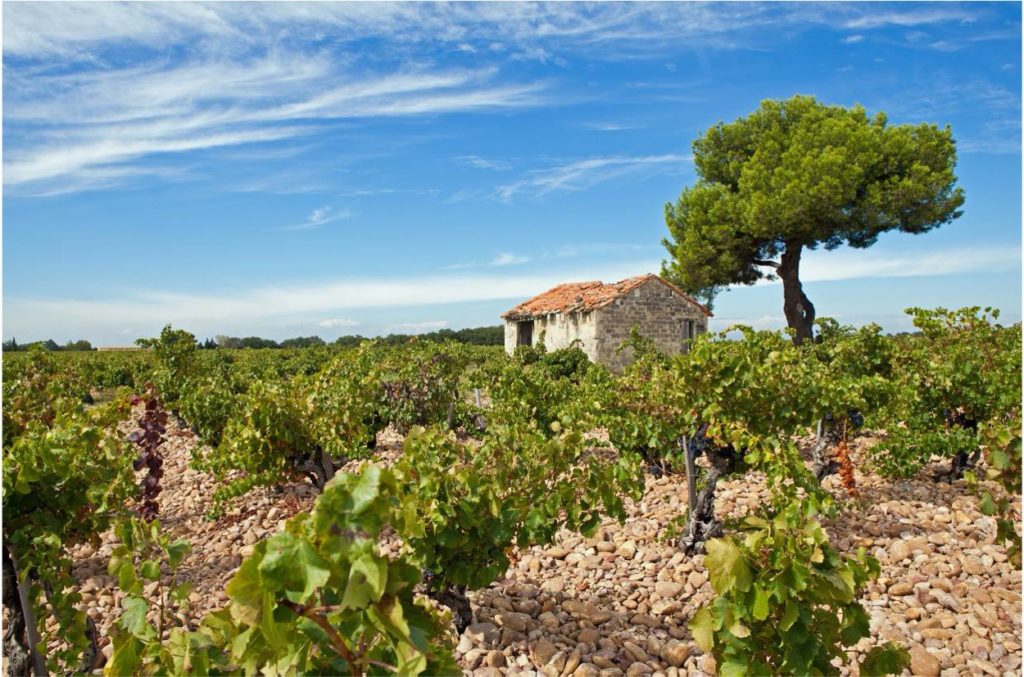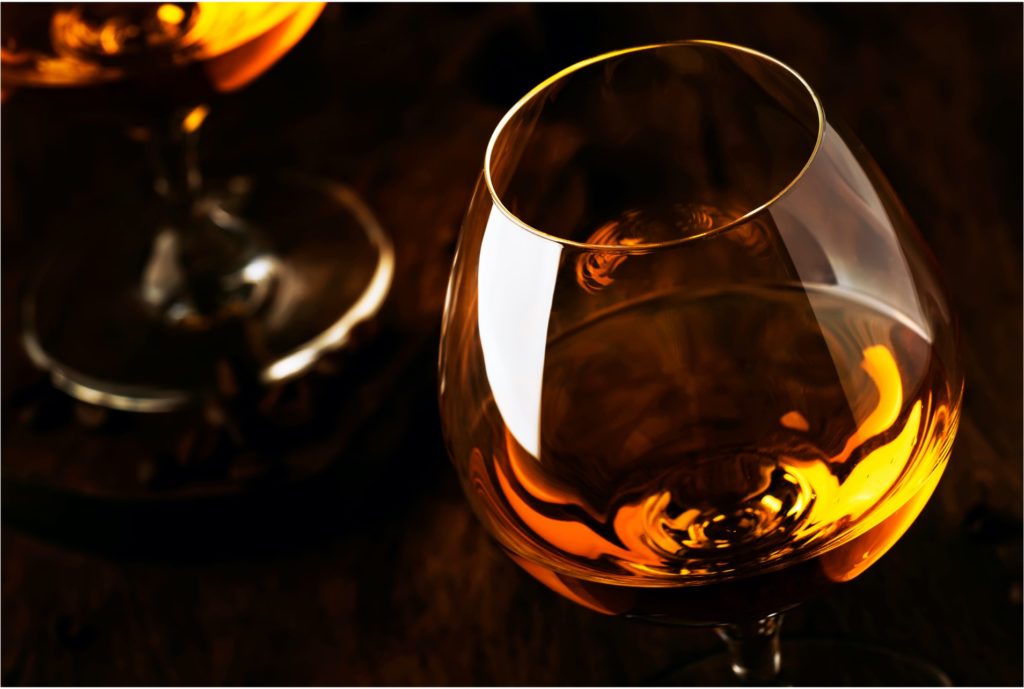
Definitive guide to Armagnac

The signature export of Gascony was once dismissed as “second-rate Cognac”, but this is no longer the case. A surge of interest in craft and small-production spirits has done wonders for the category’s reputation; The Armagnac region is dominated by family-owned houses and producers and every year, they produce one of Europe’s finest grape brandies, using superlative raw materials and time-honoured distillation. Armagnac is a destination brimming with tradition and authenticity. It is also one of the world’s oldest distilled spirits – predating Cognac by several centuries.
Click on a link to jump to that section:
An overview
Armagnac’s vineyards spread across the bucolic province of Gascony. This part of southwest France has a fascinating history: separated from the jurisdiction of the French monarchy, it was ruled by the Plantagenet dynasty for three centuries in the late Middle Ages. Its modern fame chiefly derives from the excellent gastronomy, unspoiled landscape and of course Armagnac. There are over 500 producers in the appellation, which is split into three sub-regions: Bas-Armagnac, Armagnac-Ténarèze, and Haut-Armagnac.
- Bas-Armagnac – The vineyards are cultivated in the western expanse of the appellation, grown on sandy soils that are said to yield the finest eau de vie in Gascony. Many of the region’s greatest producers are also found in this part of the Armagnac region, including Château de Lacquy and Chateau de Laubade.
- Armagnac-Ténarèze – This zone centres around the town of Condom, with the vineyards reaching as far north as the village of Nérac. This is one of France’s most picturesque vineyards, cultivated on calcareous soils that produce full-bodied and spicy eau de vie.
- Haut-Armagnac – The expansive eastern section of the appellation is responsible for just three percent of Armagnac’s total production. Vineyards are planted on very cold limestone terroir, yielding grapes with vibrant acidity.

Grape varieties
According to the Armagnac appellation framework, ten grape varieties are permitted in the final blend. However, in practice, only four are used by the vast majority of growers and merchants. They are Ugni Blanc, Colombard, Folle Blanche and Baco Blanc.
- Ugni Blanc – the most important variety in Cognac and its cousin further south. Vigorous and highly resistant to diseases, it produces light and acidic white wines that are ideally suited to distillation. This is for two reasons: high levels of malic acid protect wines from bacterial spoilage; low alcohol wines can be distilled for longer, creating a purer white spirit.
- Colombard – one of the most widely planted varieties in France, appreciated for its robustness and reliable crop yield. The fresh and acidic white wine produces excellent eau de vie, with strong aromas and good body.
- Folle Blanche – acolytes insist that the grape is responsible for the region’s silkiest brandies, with a distinctive bouquet of tobacco and white pepper that develops with bottle age. However, the variety is notoriously prone to rot in bad weather. For this reason, the acreage has declined in recent years, replaced by Baco Blanc.
- Baco Blanc – the result of a genetic combination between Folle Blanche and Noah. In can produce excellent eau de vie, albeit the vines do not crop as generously as Ugni Blanc.
Armagnac production
There are three distinct stages required to make premium brandy: fermentation, distillation and maturation. After the harvest, the grapes are pressed and fermented for approximately three weeks. The desired result is a neutral base wine, with low alcohol and high acidity – very much the antithesis of aromatic styles such as Sauvignon Blanc.
The base wines will then be distilled to make eau de vie. Literally translated as ‘water of life’, it is the building blocks of all fruit brandies. Distillation is the process of separating water from alcohol through the use of heat, this involves heating and condensing the wine in vertical column stills to create a potent white spirit.
For Cognac, double distillation via copper pot stills is routinely practised. According to the Cognac establishment, double distillation produces purer eau de vie. However, single-distillation spirits such as Armagnac contain more natural compounds, imbuing the brandy with earthy/spicy characteristics.
Yet, it is the period of oak maturation that finally determines quality and style. With the exception of Blanche Armagnac, to make Armagnac, eau de vie must have been matured in oak barrels for a minimum of one to three years. After this period, the spirit may be blended and bottled, or transferred for further ageing. The finest eau de vies can be aged for several decades, either marketed as vintage expressions, or blended with spirits from different year and casks. Most Armagnac is sold with an alcoholic strength of about 40%, although higher proof labels, known as brut de fût (cask strength), can be found – they rarely exceed 55% abv.
Armagnac’s greatest mystery is the variation between cask samples. Two identical barrels can often be quite different in character. It is one of the attractive qualities of Armagnac.
Armagnac classification
The system of classification in Armagnac generally refers to the age of the youngest eau de vie in the bottle. Analogous to Grande Champagne, growers are committed to the art of blending, often encompassing different years, sub-regions and grape varieties. The entry level is VS, where the majority of brandies used are one to three years old. VSOP Armagnac must contain brandies that are at least four to nine years old, Napoléon six to nine years old and XO and Hors d’Age, ten years old. Depending on priorities, each Armagnac producer may blend differently, and this may not be obvious from its classification.
Vintage brandies will only contain spirits from one grape harvest – vintage dates adorn the front label. By law, a vintage Armagnac must be over ten years old before it is sold, although, finding 40-year-old bottles is not difficult. They are among the most exquisite and refined brandies made today. Cognac, va t’en!
Enjoying Armagnac
Older bottles of this popular digestif are invariably round and very complex, with an aroma of white pepper, dried fruit, tobacco, honey and figs. Moreover, even top labels are attractively priced, due to Armagnac’s modest global profile.
But the spirit can play a multitude of roles. Gascon chefs use Armagnac in all manner of dishes, sweet and savoury. In addition, the spirit works very well with salty cheeses, such as Roquefort, Gorgonzola and Halloumi.
Floc de Gascogne, a liqueur made by combining Armagnac and white grape juice, is the classic aperitif in local restaurants, while in recent years, an Armagnac cocktail has become a popular choice. Turning to the world of mixology to stay relevant, Armagnac’s adaptability makes it well suited for cocktails. Try drinking Armagnac in a Tom Collins or a French Negroni. You won’t be disappointed.
Frequently asked questions
What is the difference between brandy and Armagnac?
Brandy refers to a spirit made from distilled wine. Armagnac is a type of French brandy that is produced in the Armagnac region in Gascony, France. Armagnac is single-distilled and aged in an oak barrel for a minimum of 1-3 years.
How do you drink Armagnac?
Armagnac is best enjoyed neat and at room temperature. Ideally, Armagnac is served in a small glass with a narrow rim to concentrate the rich aromas.
What is the difference between Cognac and Armagnac?
Both Cognac and Armagnac are distilled wines. Cognac is produced in the Cognac region, while Armagnac in the Armagnac region. However, the main difference comes from the distillation process – Cognac is distilled twice, while Armagnac is distilled only once, leaving behind organic residue. This residue leads to a complex, more robust spirit.




